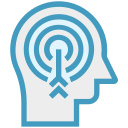Formal Practices to Train Attention
Count each exhale from one to ten, then begin again. When you lose track, smile gently and restart at one. This simple practice reveals how often attention wanders and trains the skill of beginning again—an essential habit for focus at work and in life. Try five minutes today.
Formal Practices to Train Attention
Lie down or sit comfortably and move attention slowly from toes to head. Notice tingles, tension, and warmth without fixing anything. The body scan shifts the mind from problem-solving into sensing, releasing mental clutter. Share your most surprising area of tension and how it changed after a week.
Formal Practices to Train Attention
Rest attention on sounds, sensations, and thoughts as passing events. Label them lightly—hearing, feeling, thinking—without chasing. This practice builds non-reactivity, allowing insights to surface without gripping. Use it after deep work to refresh perspective, and tell us which subtle detail you noticed for the first time.
Formal Practices to Train Attention
Lorem ipsum dolor sit amet, consectetur adipiscing elit. Ut elit tellus, luctus nec ullamcorper mattis, pulvinar dapibus leo.








